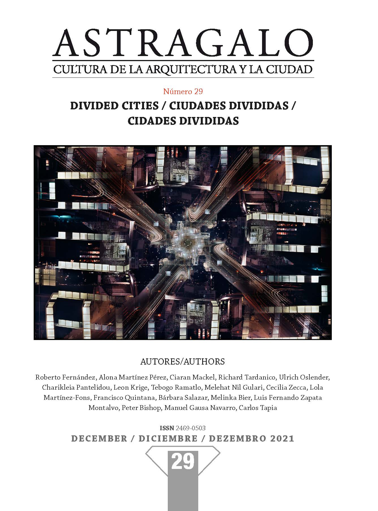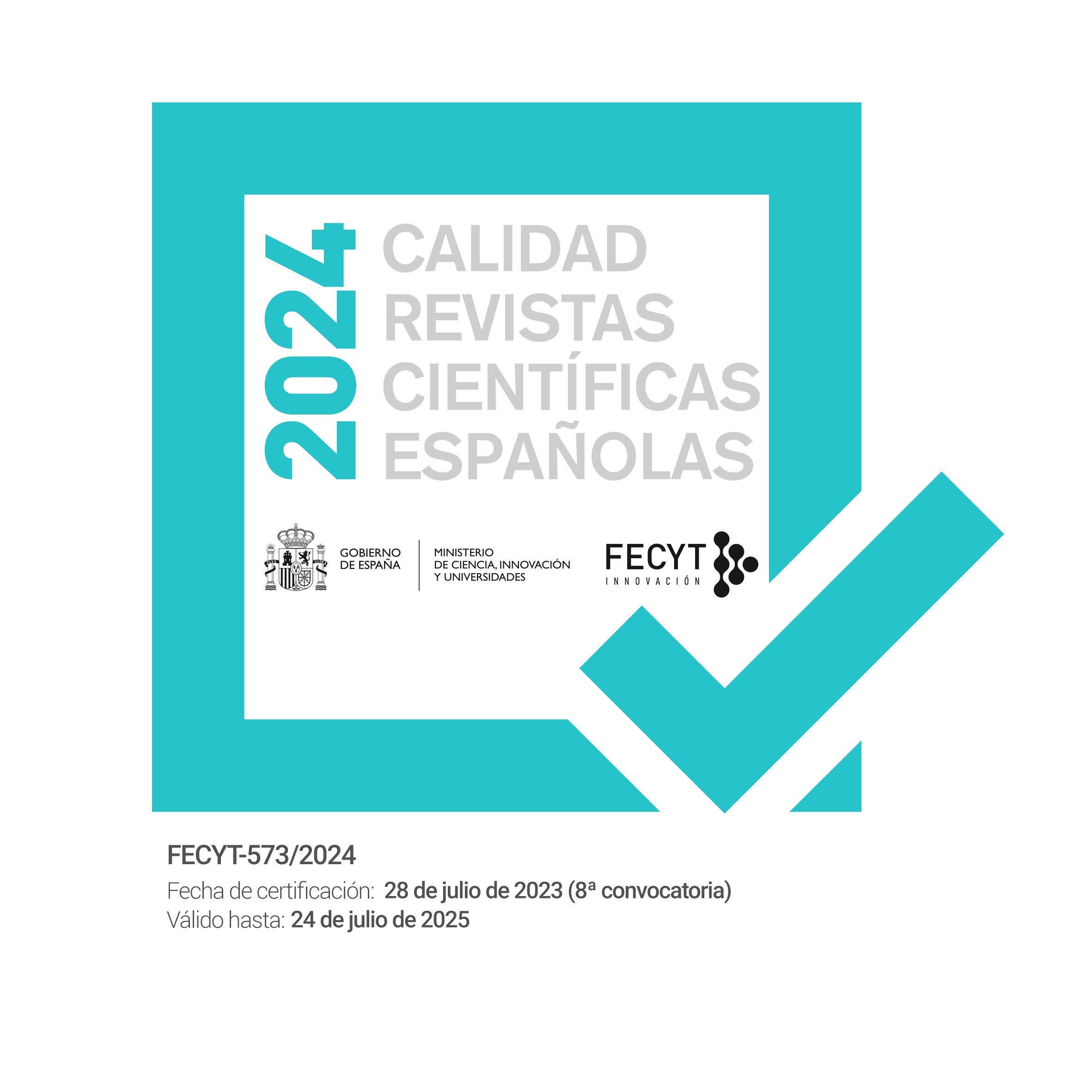Between contested territories and spontaneous reappropriation: Divided Nicosia
DOI:
https://doi.org/10.12795/astragalo.2021.i29.09Keywords:
collective memory, contested cities, urban identity, inclusive urbanism, Cyprus disputeAbstract
This paper discusses the concepts of conflict and border in relation to place and identity reflecting on narratives and meanings of dividing urban and civil borders. It takes the divided Greek and Turkish society living in Nicosia as a case study. The significance of the wall, as an explicit expression of division, is discussed but also overturned by looking at its closure and its permeability when Nicosia’s sealed borders opened again for everyday crossing.
The inquiry speculates an alternative path informed by Glissant’s concept of Opacity, Agamben and Nancy’s non-essentialist approaches non-community to look at entangled deep-rooted ethnic divisions and fragments of shared cultures. To inform urban epistemology, two bottom-up examples are analysed using De Certeau’s concepts of everyday life: Home for Cooperation, which is a neutral space in the buffer zone for unified collectively and Occupy Buffer-zone Movement, which has occupied a non-place and transformed it into a public square through grassroots activism.
The paper highlights that in order to draw a feasible future of Cyprus, an anti-essentialist acceptance of the multiple and eclectic origins of the context is needed. In this sense, the tangible and intangible meaning of division requires a shift of meaning, from delimitation, classification, separation to a porous element of balance and calibration. The top-down urban models and concept of inclusiveness have been shaken by the temporal civic grassroots communities, and this demonstrates that collective participation fosters the reappropriation of public space, overturning the perception and the experience of the border of differences. This contributes to theorizing a critical and reflective, rather than idealistic, practice of participation in urban design.
Downloads
Metrics
References
Agamben, Giorgio. 1993. The Coming Community. Minneapolis: University of Minnesota Press.
Brand, Ralf. 2009. “Written and Unwritten Building Conventions in a Contested City: The Case of Belfast”. Urban Studies. 46, 12: 2669–2689.
Bollens, Scott A. 2012. City and Soul in Divided Societies. London: Routledge.
Cacciari, Massimo. 2004 La cittá. Villa Verrucchio: Pazzini Editore.
Calderon, Camilo. 2020. “Unearthing the political: differences, conflicts and power in participatory urban design”. Journal of Urban Design 25, 1: 50-64.
Carmona, Matthew. 2014. “The Place-shaping Continuum: A Theory of Urban Design Process.” Journal of Urban Design. 19, 1: 2-36.
Cuthbert, Alexander R. 2007. “Urban Design: Requiem for an Era - Review and Critique of the Last 50 Years.” Urban Design International 12 (4): 177–223.
De Certeau, Michel. 1998. The Practice of Everyday Life: Living and cooking. London: University of California Press. Translated by Steven Rendell.
De Vita, Gabriella E., Claudia Trillo and Alona Martinez-Perez. 2016. “Community planning and urban design in contested places. Some insights from Belfast”. Journal of Urban Design, 21:3, 320-334, DOI: 10.1080/13574809.2016.1167586
Dikomitis, Lisa. 2005. “Three readings of a border”. Anthropology Today 21, 5: 7-12.
Hirsch, Marianne. 2001. “Surviving Images: Holocaust Photographs and the Work of Postmemory”. The Yale Journal of Criticism 14, 1: 5-37.
Gaffikin, Frank, Malachy Mceldowney and Ken Sterrett. 2010. “Creating Shared Public Space in the Contested City: The Role of Urban Design. Journal of Urban Design 15 (4): 493–513. DOI: 10.1080/13574809.2010.502338
Gheerawo, Rama. 2016. “Socially inclusive design: A people-centred perspective”. Companion to Design Studies, edited by Penny Sparke and Fiona Fisher, 304-316. London: Routledge.
Glissant, Édouard. 1997. Poetics of Relation. Translated by Betsy Wing. Ann Arbor: University of Michigan Press.
Glissant, Édouard. 2020. Introduction to a Poetics of Diversity. Translated by Celia Britton. Available online: http://public.eblib.com/choice/PublicFullRecord.aspx?p=6230108 (accessed on 15 December 2021).
Goker, Ayse A. 2007. “Being 'Cypriot' in North London: strategies, experiences and contestations”. PhD Thesis, University College London, Department of Anthropology.
Gulari, Melehat N., Asli Börü and Julian Malins. 2011. “Towards an evolutionary understanding on the success of participatory design”. 2011 Design Education for Creativity and Business Innovation Conference edited by Ahmed Kovacevic, William Ion, Chris McMahon,
Lyndon Buck, and Peter Hogarth, 721-726, London, UK.
Hou, Jeffrey, Benjamin Spencer, Thaisa Way and Ken Yoco. 2015. Now Urbanisms. The future City is here. London: Rutledge.
Iliopoulou, Eirini and Pafsanias Karathanasis. 2014. “Towards a Radical Politics: Grassroots Urban Activism in the Walled City of Nicosia”. The Cyprus Review 26, 1: 169-192.
Jones, Reece. 2012. “Spaces of refusal: rethinking sovereign power and resistance at the border”. Annals of the Association of American Geographers 102, 3:685-699. https://doi.org/10.1080/00045608.2011.600193
Karahasan, Hakan. 2005. “Different narratives, different stories: the language of narrative and interpretation”. Journal of Cyprus Studies, 11 28-29: 115-128.
Kliot, Nurit and Yoel Mansfeld. 1997. “The political landscape of partition: The case of Cyprus”. Political Geography 16, 6: 495-521.
Mallinson, William. 2016. Kissinger and the Invasion of Cyprus: Diplomacy in the Eastern Mediterranean. New Castle Upon Tyne: Cambridge Scholars Publishing.
Mouffe, Chantal. 2005. On the Political - Thinking in Action. Abingdon: Routledge.
Nancy, Jean-Luc. 1991. Inoperative Community, Minneapolis, MN: University of Minnesota Press.
Papa, Venetia and Peter Dahlgren. 2017. The Cypriot ‘Occupy the Buffer Zone’ movement: online discursive frames and civic engagement. Oxford: Berghan books.
Peck, Jamie. 2015. “Cities Beyond Compare?” Regional Studies: The Journal of the Regional Studies Association 49, 1–2: 160–182. doi: 10.1080/00343404.2014.980801
Pullan, Wendy and Britt Baillie. 2013.. Locating Urban Conflicts – Ethnicity. Nationalism and the Everyday. London: Palgrave Macmillan.
Relph, Edward. 1976. Place and placelessness. London:Pion.
Rogers, R., 2017. A place for all people: Life, Architecture and the Fair Society.Edinburgh; London: Canongate Books Limited.
Tagliacollo, Emma. 2011. “I confine di Cipro: il “muro” di Nicosia”. Richerche di S/Confine, vol. II, n.1. Available on https://www.repository.unipr.it/bitstream/1889/1546/1/TAGLIACOLLO-confini.pdf Last accessed 15 December 2021.
Webster, Craig. and Timothy, Dallen J. 2006. “Travelling to the ‘Other Side’: the Occupied Zone and Greek Cypriot Views of Crossing the Green Line”. Tourism Geographies, 8 (2): 162-181.
Downloads
Published
How to Cite
Issue
Section
License
Copyright (c) 2021 Melehat Nil Gülari, Cecilia Zecca

This work is licensed under a Creative Commons Attribution-NonCommercial-ShareAlike 4.0 International License.
Accepted 2022-01-04
Published 2022-02-04
- Abstract 357
- PDF 248


















